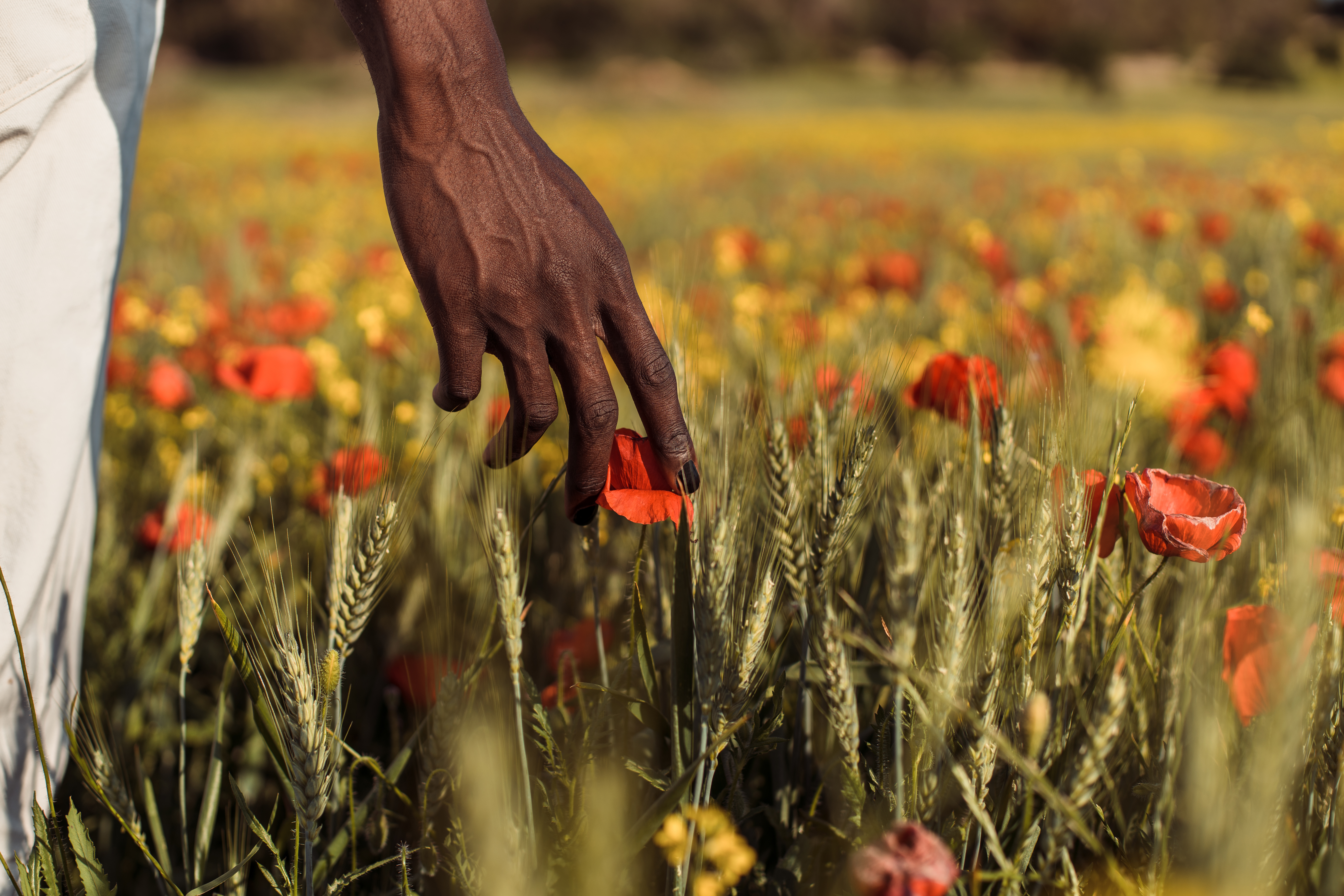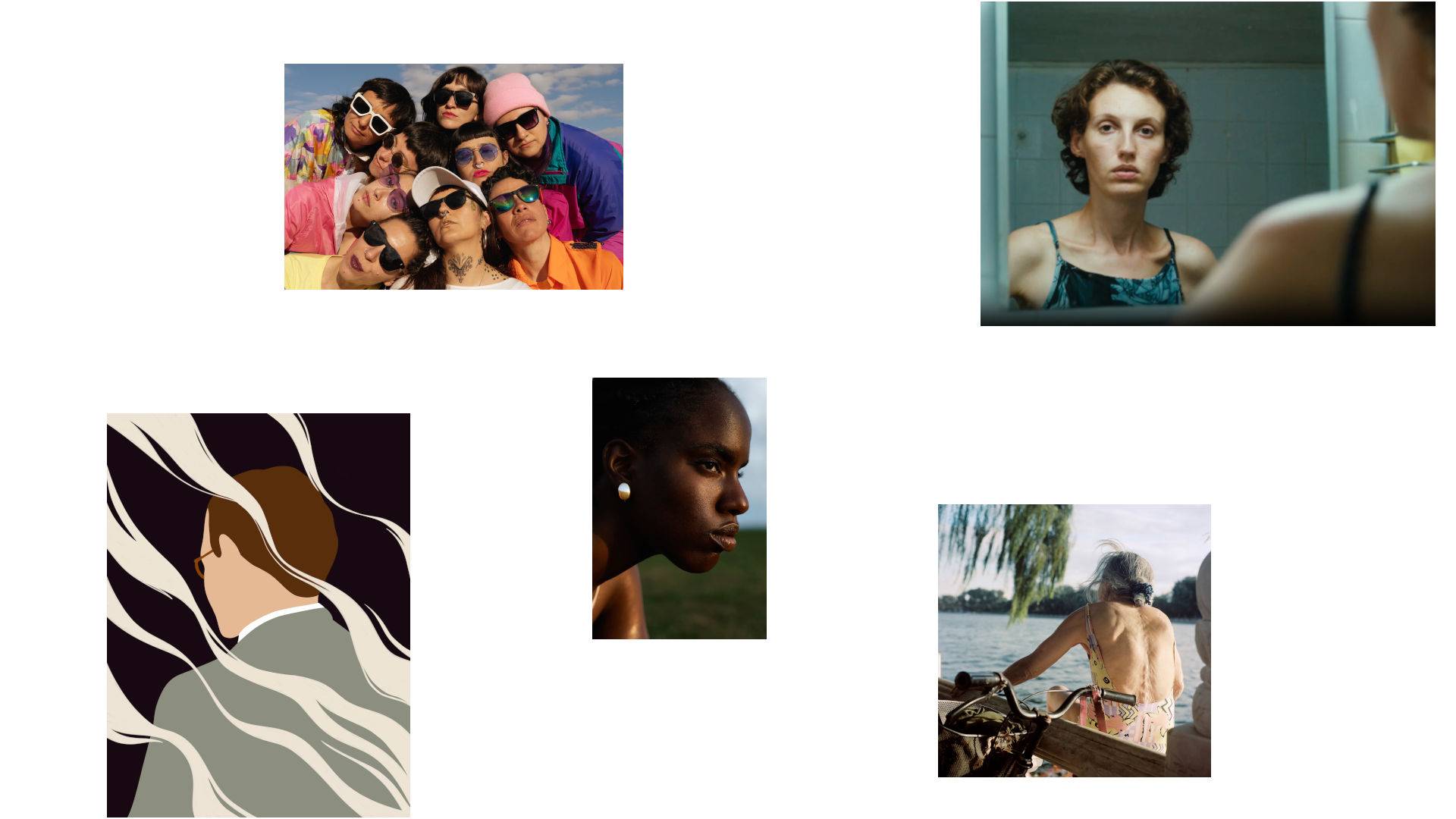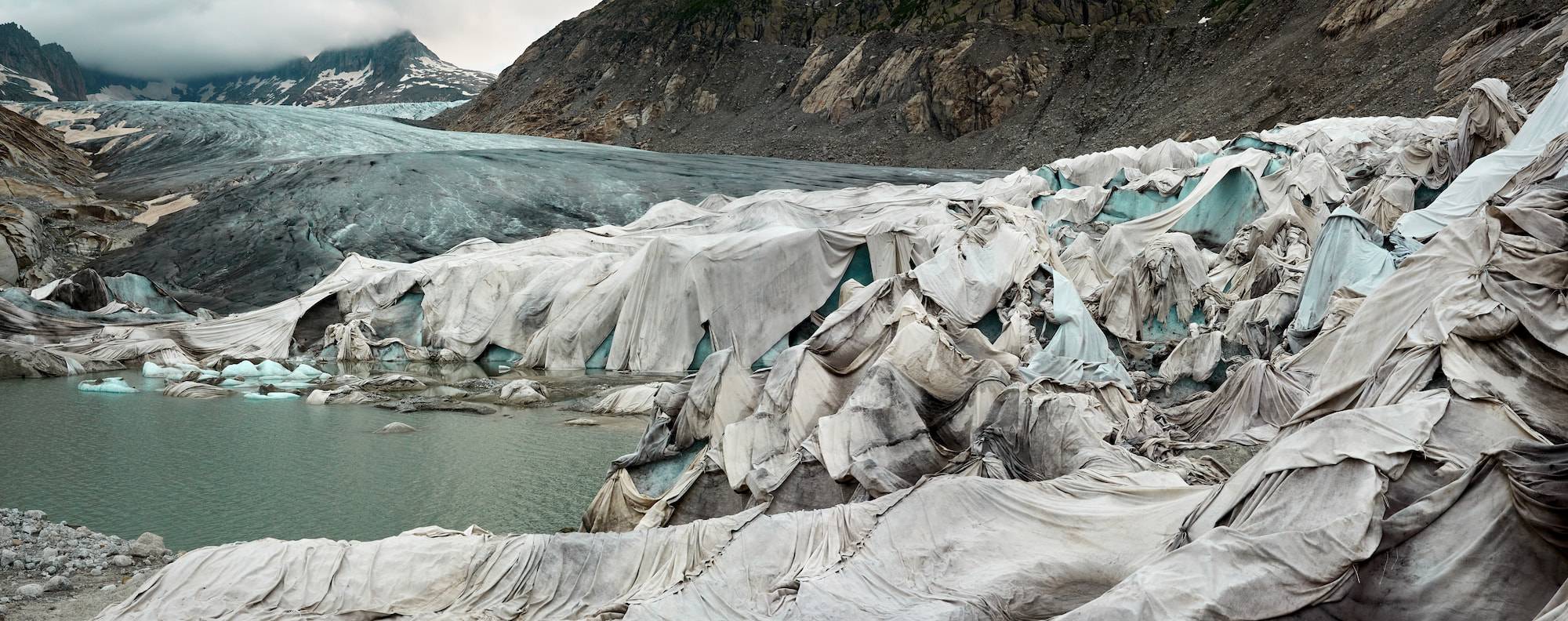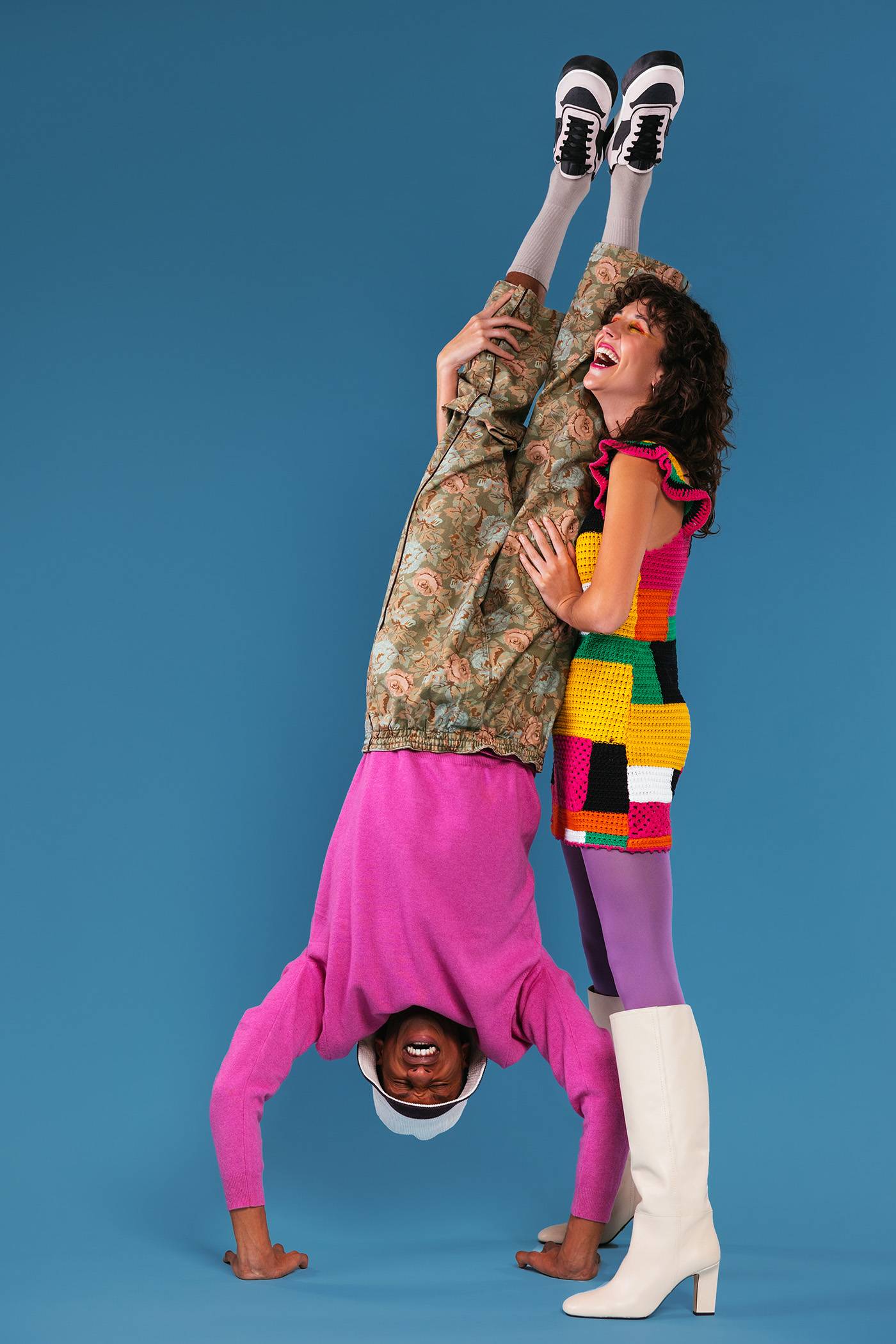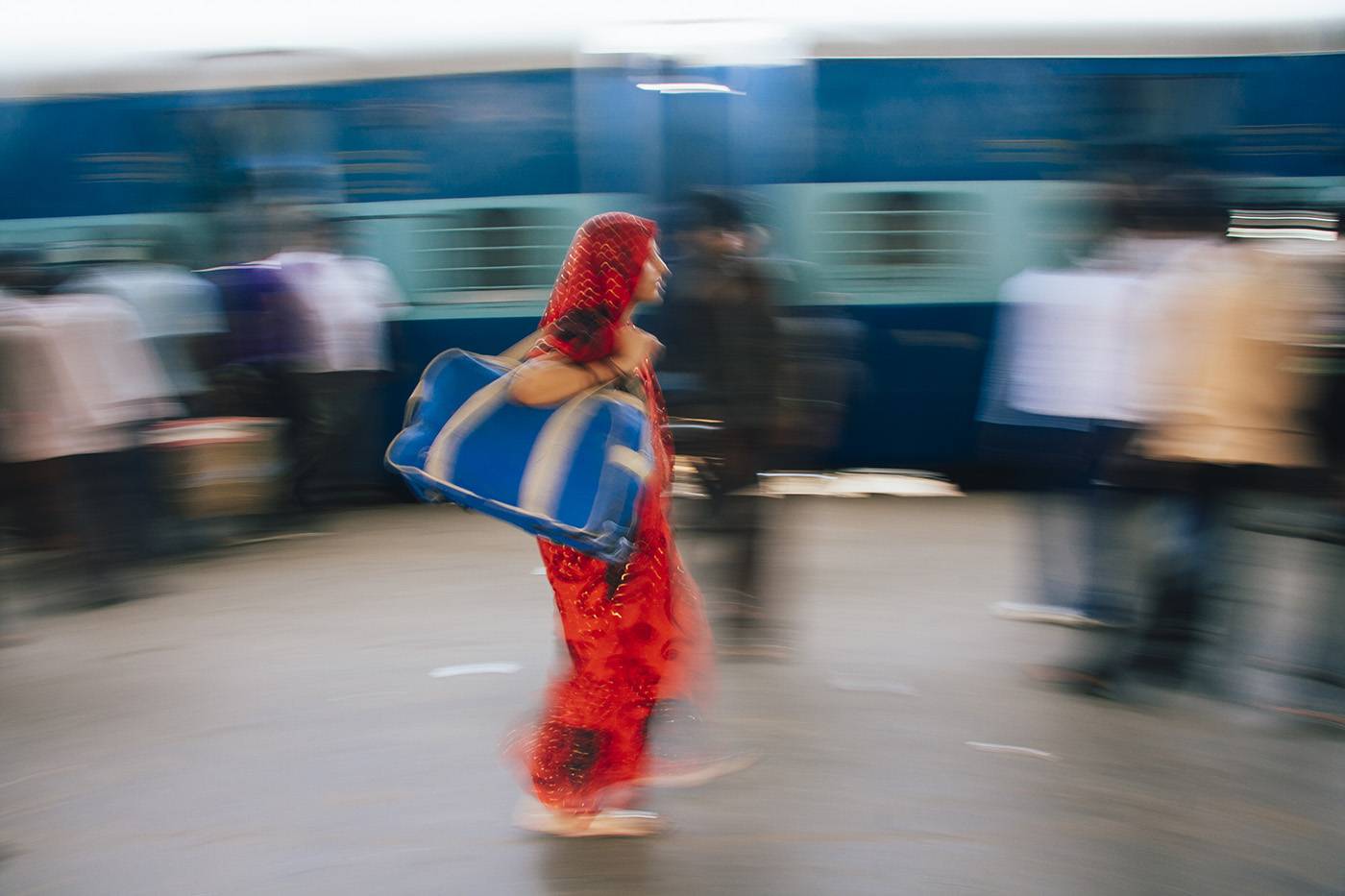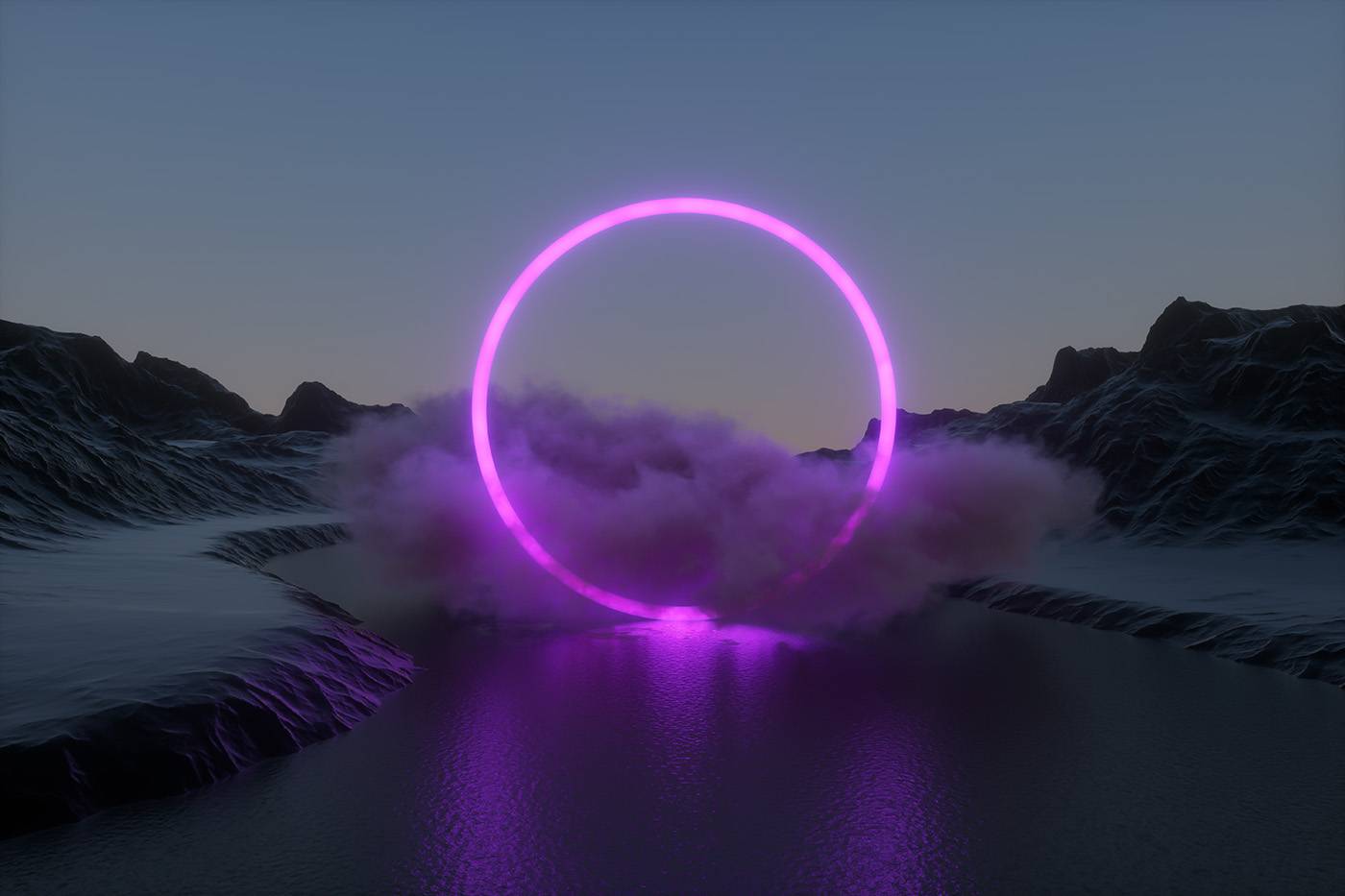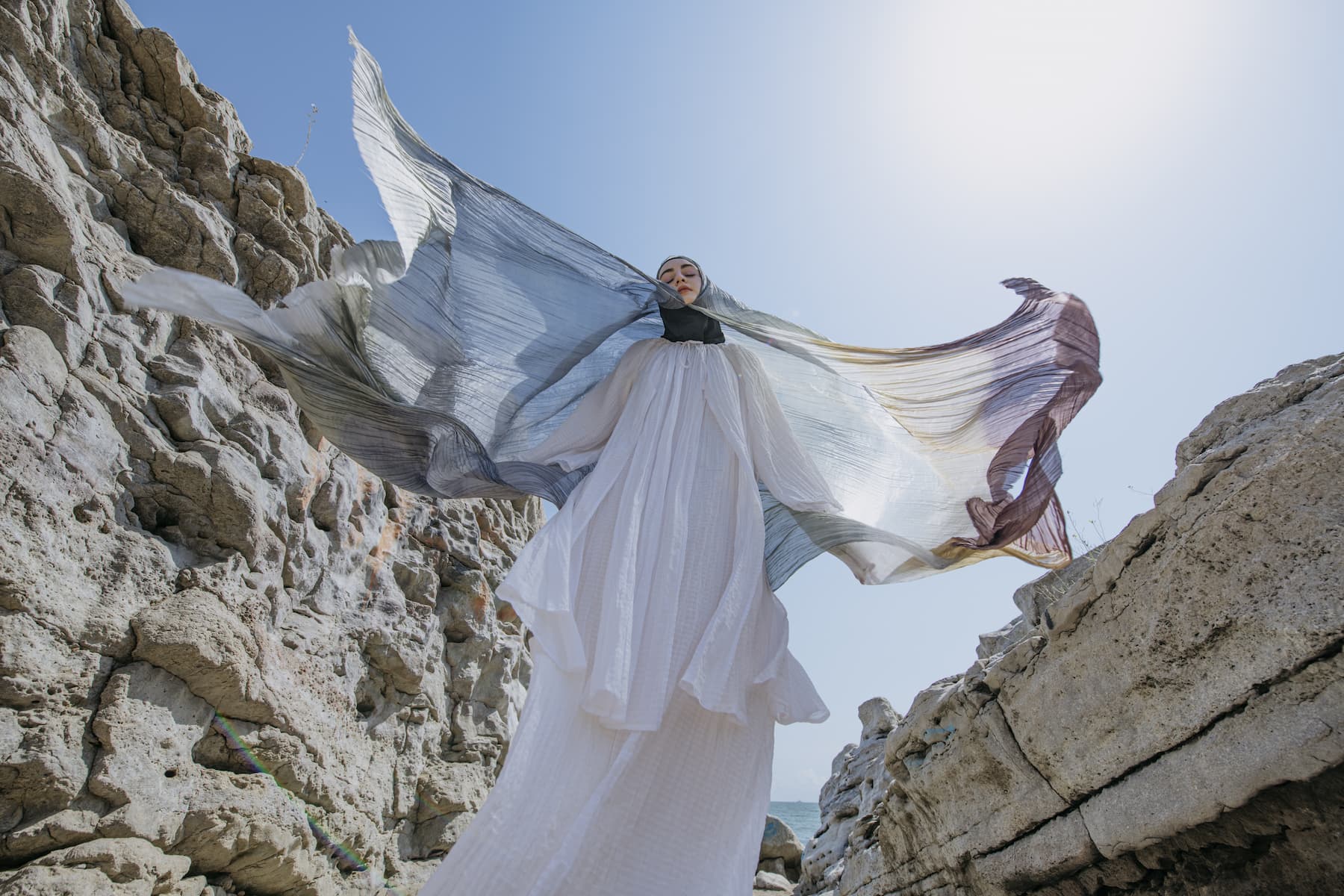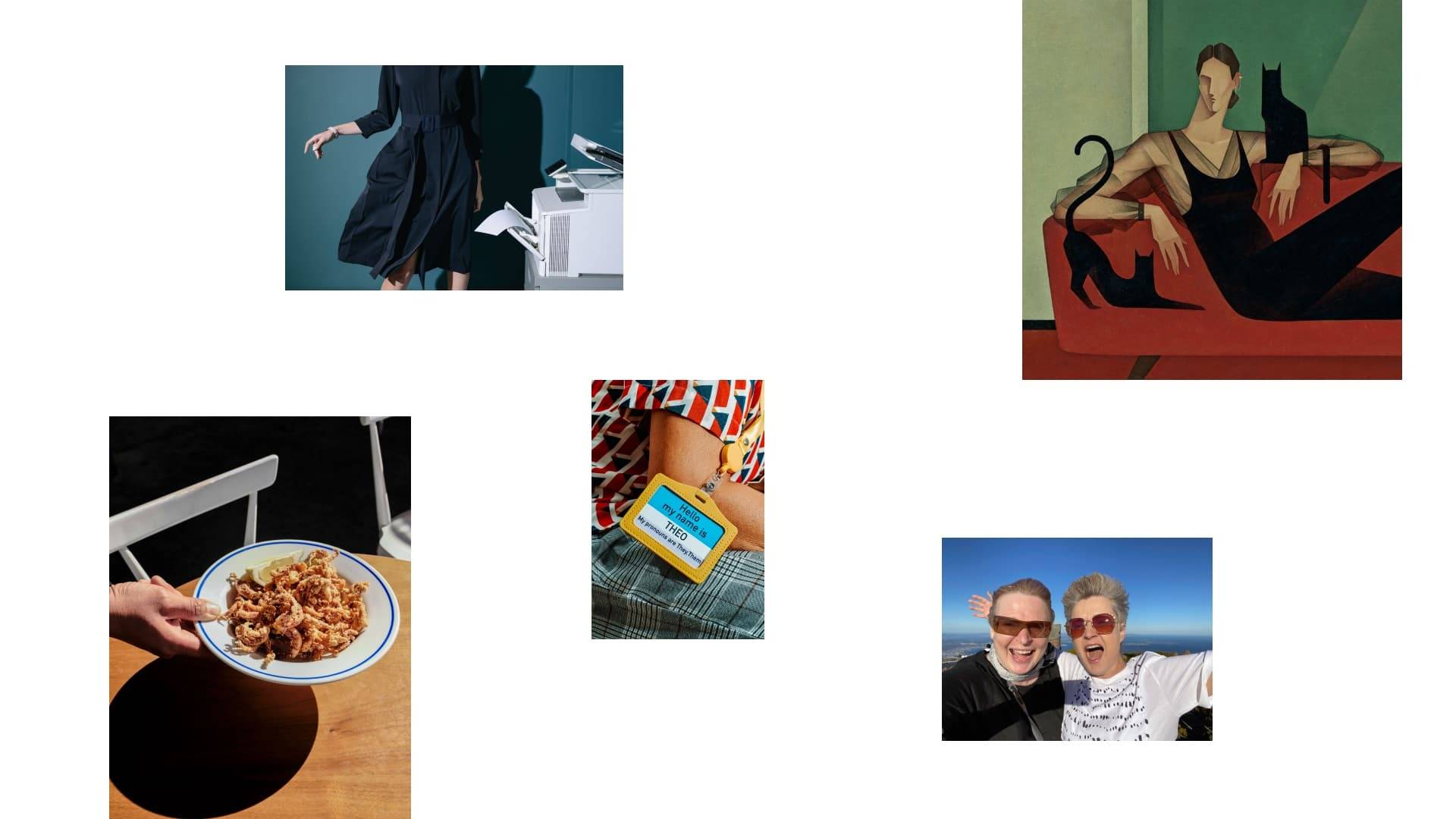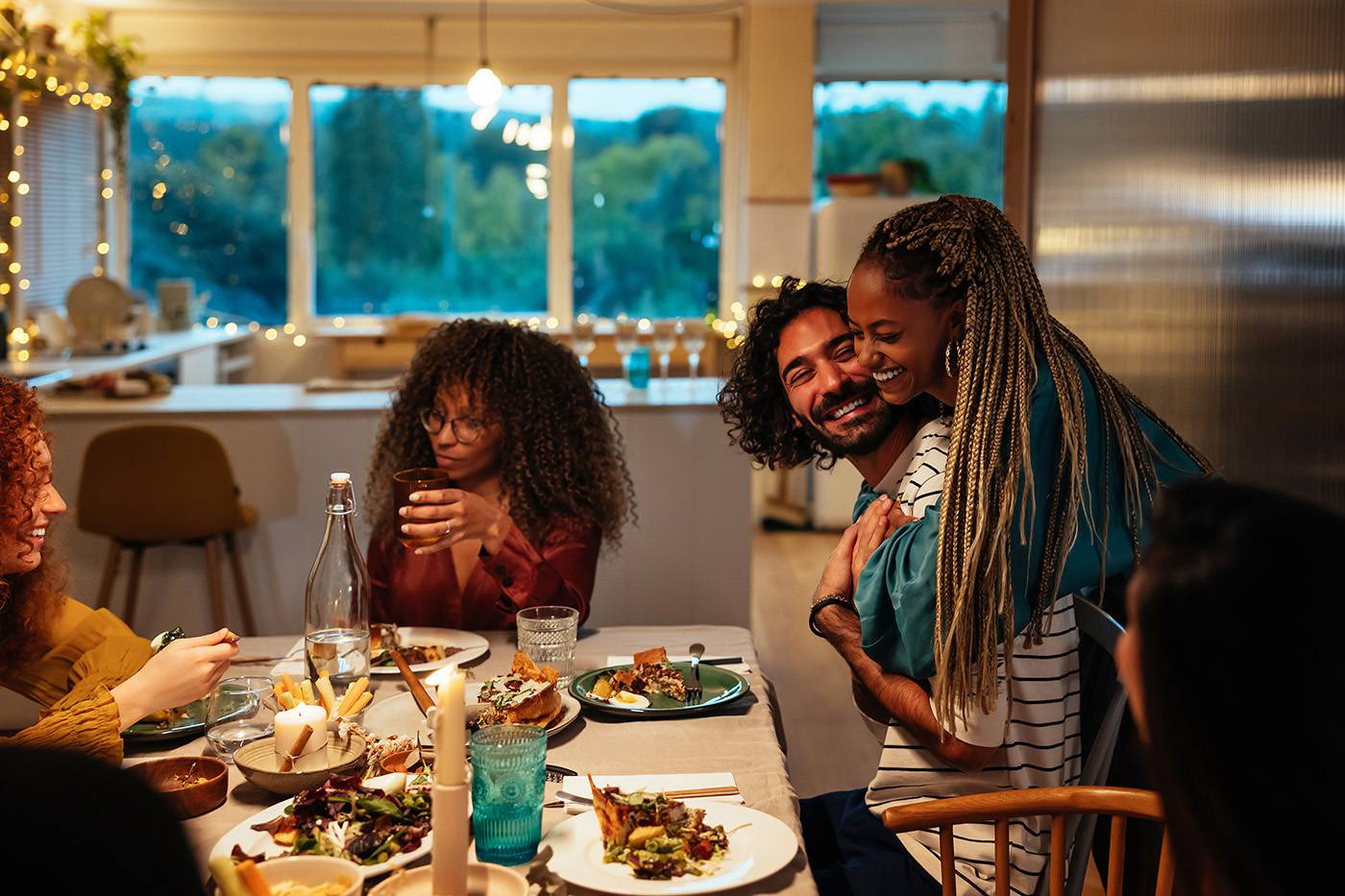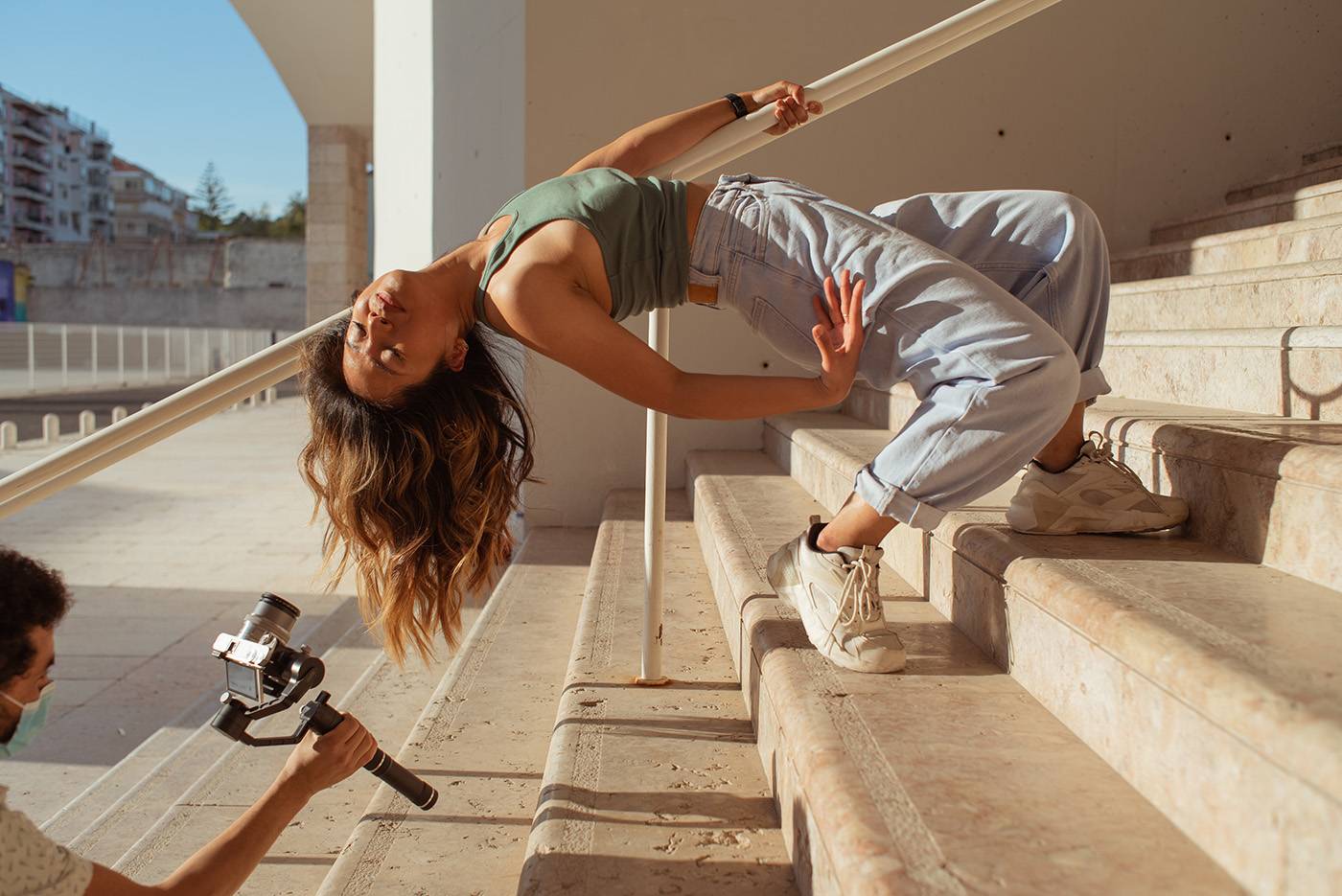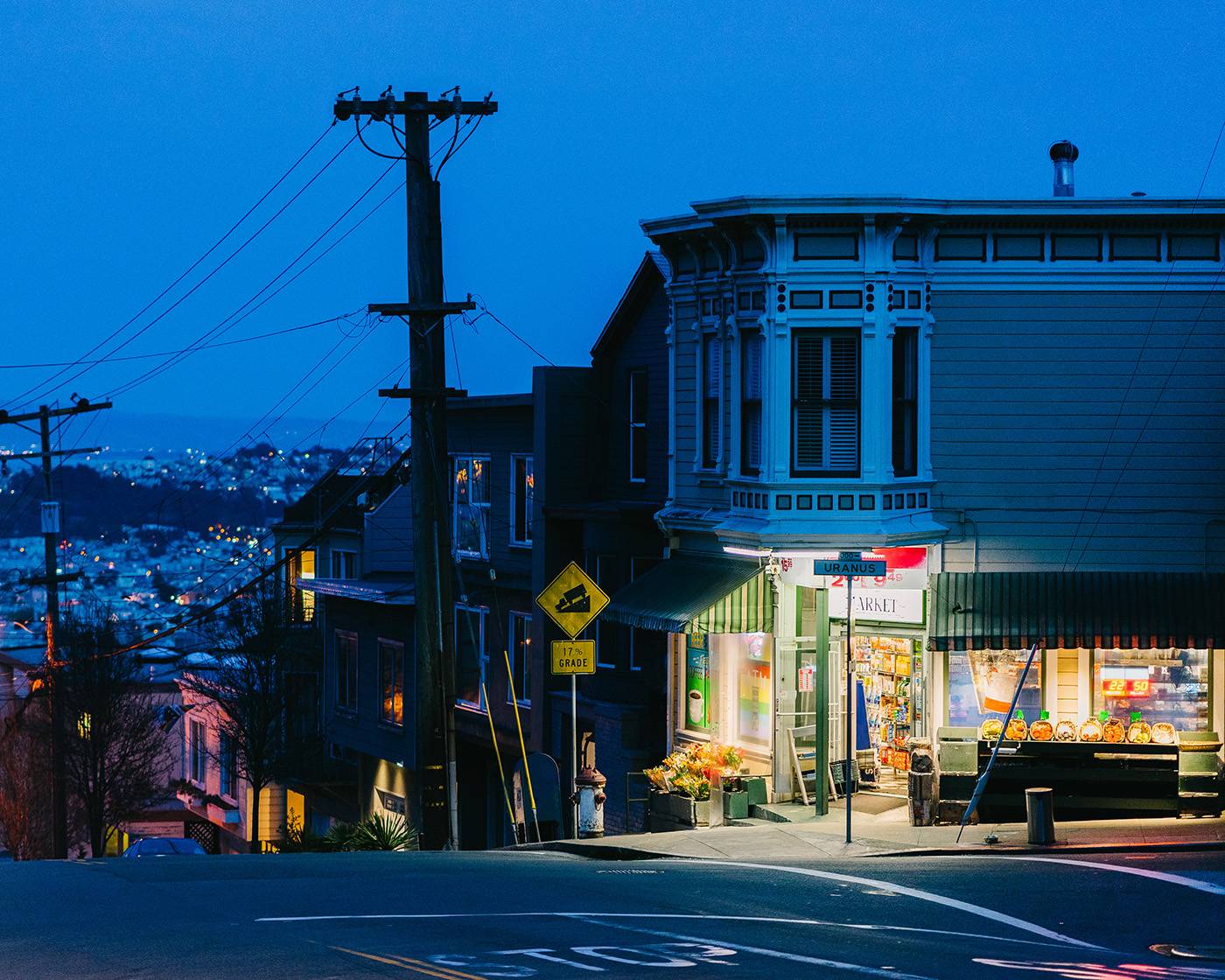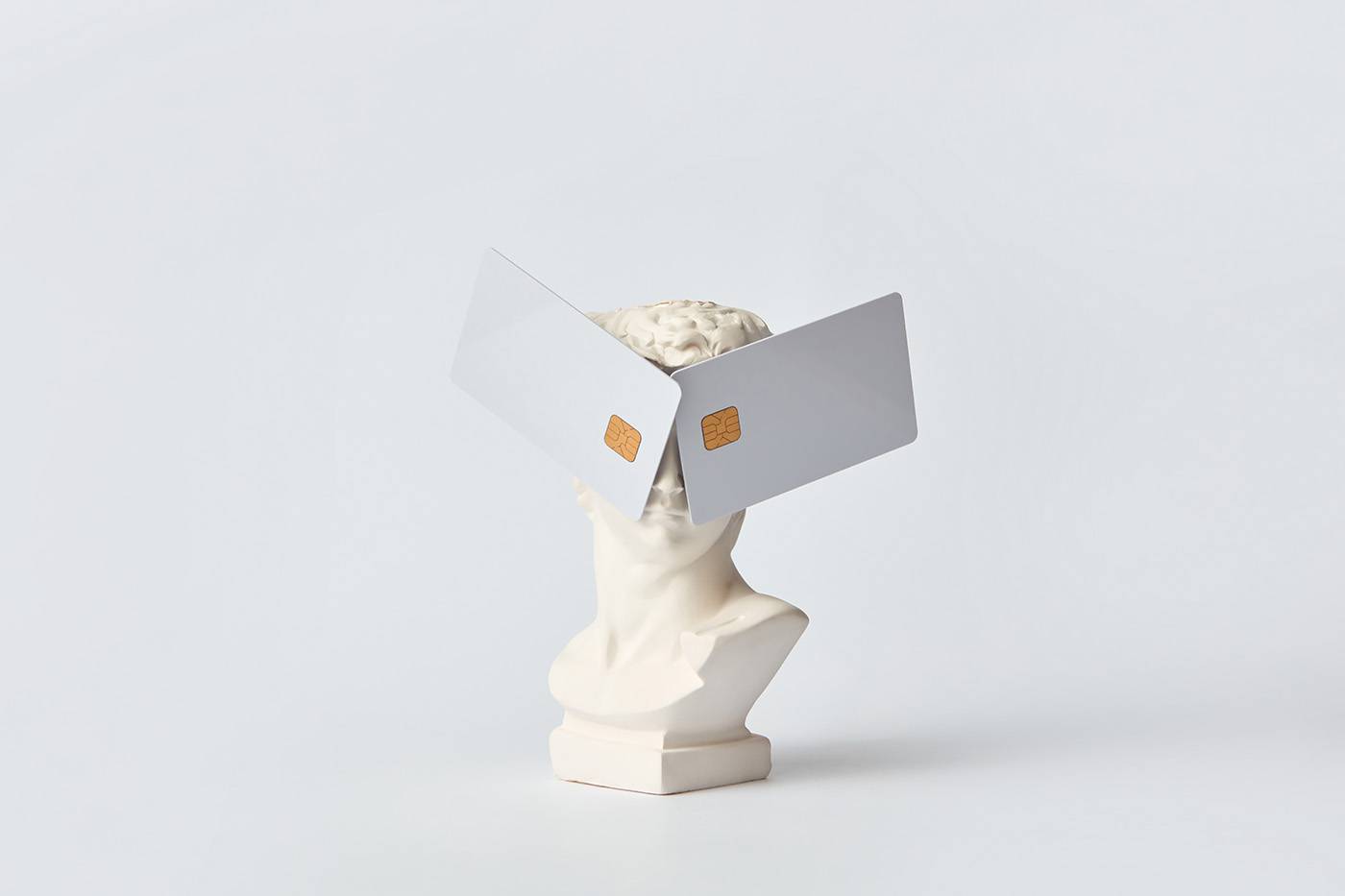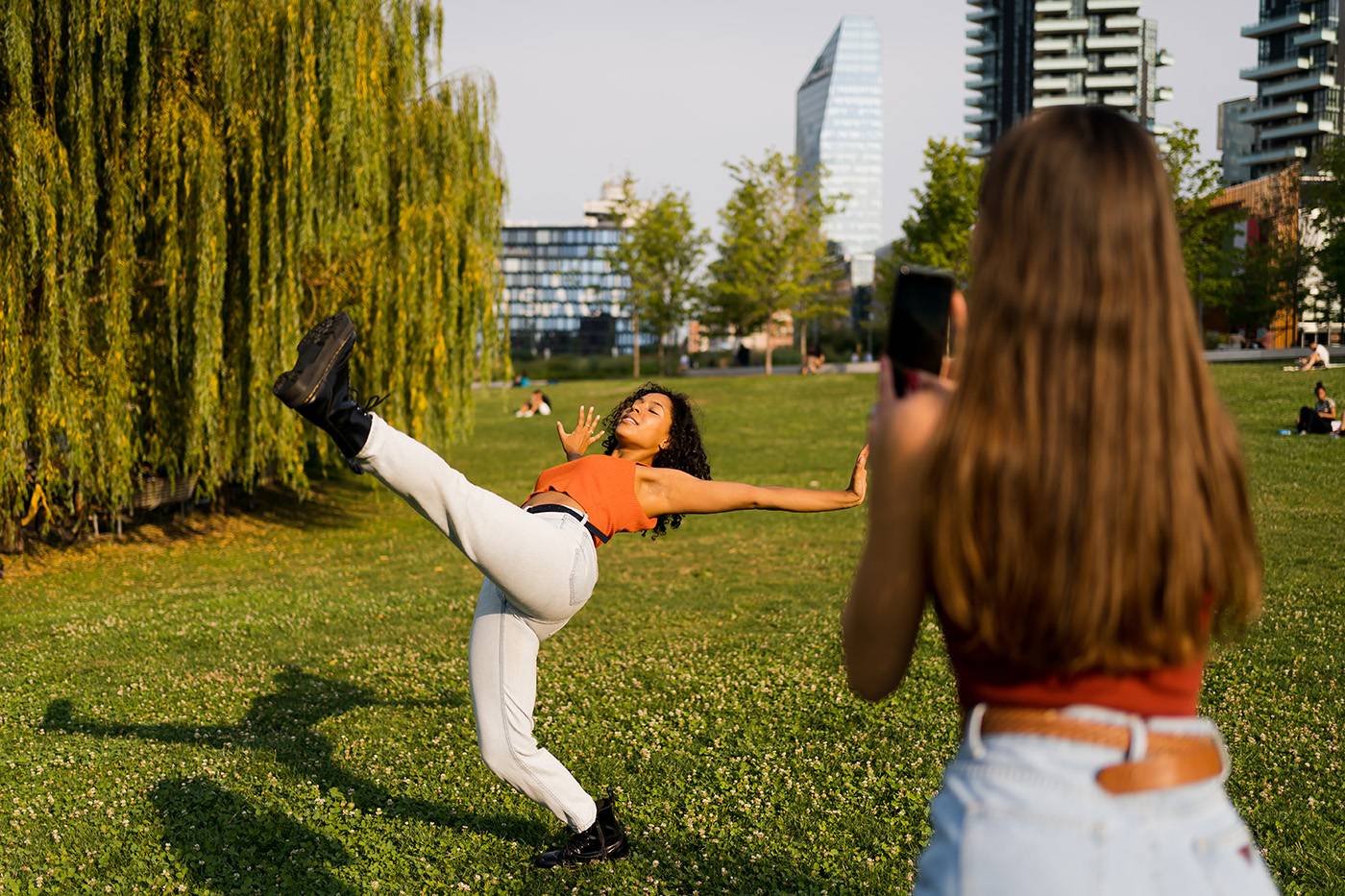We all know stock photography has been around for a while now, growing into a large industry that supports countless others with quality imagery. These days, however, stock video is the cool kid on the block.
What is stock media?
Stock media is content that can be licensed from an agency or stock provider platform for use in commercial and personal projects. Stock media ranges from stock photography, stock footage, music, vectors, illustrations, and more. All of these media types can be purchased in different licensing formats.
Stock video footage is everywhere. It has been used in everything from big-budget Hollywood films to marketing campaigns to influencer-worthy Instagram stories. It’s in advertisements, educational materials, you name it, video is there.
Where did stock footage come from?
Stock footage companies started popping up in the mid-1980s, building on the foundations of an already established stock photography industry. Libraries often consisted of niche topics, as one production company focused on extreme sports while another focused on cultural or technological collections of footage. Larger agencies bought these smaller niche companies and began assembling their own comprehensive collections of stock video.
As personal camcorders like the Betacam and VHS became household items, the possibility for more people to create videos increased as well. Shooting stock footage on film used to be the only way to create video productions in the past. These technologies paved the way for today’s modern tools, like the smartphone’s video recorder and various playback and streaming platforms.
Evolving much like stock photography, stock video is now a thriving market for creators and customers. Many stock agencies that offer stock imagery also offer stock footage. Similarly, content creators have begun to dedicate more time to capturing video clips to sell along with their photos.
Why Stock media is important for filmmaking
Making a film is a gargantuan undertaking. Simply watching the end credits of a movie illustrates how many people are involved in a single production. There are seemingly endless elements to consider. Whether creating a piece of work in the magnitude of a documentary, commercial, or blockbuster movie, films are exciting, time-consuming, expensive projects.
Stock media is the filmmaker’s unsung hero. It saves time and money, alleviates stress, offers inspiration, reduces environmental impact, and can be the safety net assurance that every risky project (and project owner) needs.
How Stock media saves Filmmakers’ time and money
Shooting a scene takes an immense amount of time. First, a brief must be prepared and delivered to all crew involved. A location must be scouted well in advance. The set needs assembling. Shooting time can get very long depending on a number of elements, including, but not limited to, shifting weather, missing props, late talent, equipment malfunction, and a myriad of other possible snags. And then there’s editing time.
On the flip side, filmmakers working in production studios outside the city can simply use a few seconds of stock footage in their project to fill in detail without needing to travel into town without any of the above potential pitfalls. Case and point: it can save an enormous amount of time and money.
What about when you have shot all your footage in a specific location and when it hits the editing room, you realize that some or all of it is unusable? The time involved in reshooting a scene can push projects way back.
For example, if you are shooting a film that requires a trip to the jungle, capturing establishing aerials and landscape details can be astronomically expensive and time-consuming. Jungle film worker populations aren’t especially high, so you’ll likely have to travel with a crew. And shooting in a wet, dense, rainforest can be a logistical nightmare. The moving pieces required to get those shots can crush a production budget pretty quickly.
Stock footage solves all these issues by having an extensive B-roll library readily available. With a simple, efficient search, a stock clip can be licensed, cut, and color graded in under an hour. Beats a whole day or more of shooting if you don’t have to.
Current stock footage trends
Following the current change in society, contemporary marketing strategies are moving towards more authentic and ethical practices. As the average consumer becomes more knowledgeable and discerning in the types of products they buy, the services they use, and the businesses that they support, the way that marketing engages them is changing too.
As sustainability, eco-friendly practices, diversity, inclusion, and representation come to the forefront of day-to-day life for more people, companies are adapting to these shifts. This is then reflected in the style of content that cinematographers are producing, further contributing to the slow, yet steady journey towards greater equality and more balanced visual media baselines.
Content creators and the individuals, organizations, and companies that use their content share some of the responsibility in how it is used. While this responsibility might not seem evident at first, it is an integral part of the way in which ideas, concepts, events, and products are perceived by the average consumer. Displaying authenticity, incorporating ethical practices, and enhancing corporate social responsibility is becoming a more critical part of everyday business as a result of current societal trends. As a result, video is becoming the de facto content material to communicate brand values and evolve visual media to reflect the real world.
How to use stock footage for marketing
Finding a modern marketing professional that has never had to work with video would be a frustrating endeavor. Video is used in most content marketing platforms these days, and there is a push to use it more and more. As markets get more saturated and consumer mental availability gets more scarce, stock video is becoming a critical piece of communication collateral for brands and organizations to cut through the noise. There are several channels where marketers can leverage stock footage to increase awareness and save budgets.
Social Media
Video is increasingly favored by social algorithms and that trend doesn’t seem to be going anywhere. 93% of social media managers say it’s a vital component of their strategies.
- Facebook – 79% of marketers post video on Facebook (who are those 21%??), which makes sense because people gaze 5x longer at video than at static posts on Facebook.
- Instagram – Reels are full-screen vertical videos that can be up to 90 seconds long and receive 22% more engagement than regular Instagram video posts
- Tiktok – The social media juggernaut of the 2020s, TikTok is and has always been video-first. With over 1 billion active users, and a successful business portal for brands and advertising, TikTok is a very useful marketing tool and shoo-in for stock footage.
- Youtube – Stock video is a huge asset for YouTube creators
Whether you’re building drip campaigns or sending out a monthly newsletter, email marketing continues to be one of the top-performing conversion channels for brands. Getting an open depends on your copy, and getting a click and engagement depends on your content. Just adding the word video in your subject line can increase your email opens by 13% and emails including a video can render a 96% higher click-through rate than those without.
Advertising
Video advertising is projected to grow to $78.5 billion by the end of 2023. Whether you are running Google display ads or social media ads, more and more marketers are choosing video over static images to promote their products and tell their brand stories.
Blogs
Using videos in blog posts can up your game by increasing engagement and drive more traffic to your site. People spend 2.6x more time on pages that contain videos.
Learn more about how to save time and money with Stocksy video marketing tips.
How stock footage saves the environment
The environmental impact of setting up a full crew to film custom content is staggering. Construction of a single soundstage can lead to 4,000 hectares of deforestation, according to research from UCLA. According to the British film organization, a single hour of television produced in the U.K. produces 13 metric tons of CO2. The good news is that some of the waste created and resources used to capture film content can be avoided.
- Stock video has already been shot and doesn’t require net new content created with all the waste involved.
- Stock video is often by locals that don’t need to travel and incur environmental damage to capture the content filmmakers need.
- Libraries like Stocksy that have stock video clips of destructive forces like fires, explosions, etc., mean that filmmakers don’t need to stage environmentally damaging scenes.
Where is stock footage used?
B-roll stock footage in filmmaking
Let the record state: stock footage is not the same thing as B-roll footage. B-roll in film and television productions refers to alternative or supplemental footage that’s intercut with the main shot, often adding context to the story. This footage usually doesn’t need sound to accompany it as it uses the main footage audio to progress the story while B-roll shots are blended in. B-roll footage can become part of a stock footage library but is not considered stock footage by default as it is typically shot for the purpose of completing the main production.
Another popular use for stock video is in documentary filmmaking. The use of stock video footage allows filmmakers to create documentaries that cover subjects from all around the world, without needing to travel to each location with a full crew and gear — a logistical nightmare. Oh, and music videos. Stock videos can be literally anywhere.
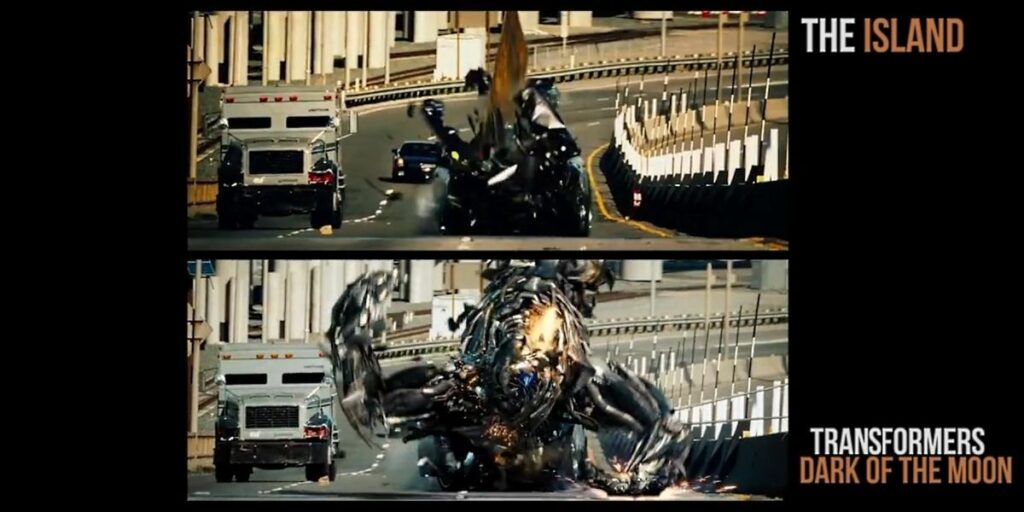
Stock footage in commercials and ads
In addition to major motion pictures, cinematic stock footage is used in commercials and advertisements every day. Commercials that convey drama and intrigue can do so without ever having to pick up a camera or hire a model. Commercials with a somber mood, upbeat energy, political topics, and pop culture moments can all be created and executed professionally with stock footage. Stocksy’s From this Model and From this Shoot features help marketers and advertisers to create cohesive stories across an entire commercial’s length, making it feel like a custom shoot.
Stock video backgrounds
UX and graphic designers opt for video backgrounds over photos now more than ever. Movement catches up to 400% more attention in a hero banner on any given website and with the large catalog of stock footage available, it’s easier to find a background that suits the vision for any website.
When choosing a stock background, designers often look for a set of criteria on which to base their decisions but one of the central considerations across the field is to strike a balance between making a statement without distracting. The video should catch the viewer without overwhelming them or drawing attention away from the core product or communication.
Sound also can be a mess if it’s too wild. Stock footage is most often licensed without sound (Stocksy’s is, at least), which gives total creative freedom to add in a track if need be or keep it silent. Remember, stock footage backgrounds often serve to establish a mood, not the message. But that doesn’t mean that they’re not fun and inspiring to experiment with. We created a stock video textures collection that fully absorbed us into the wonderful world of background potential.
What to look for in a stock footage clip
Length
When choosing a stock video clip for your project, length can be an important deciding factor. Longer clips offer more flexibility for the cutting floor and fit seamlessly into your ad or movie but that doesn’t mean longer means better. Stocksy video clips are between 10-60 seconds, giving you enough camera time to tell a story without too much time to get absorbed in a whole event.
Camera movement
Paying attention to motivated camera movement can be elemental in drawing a viewer’s attention, distracting, or boring them. If what you need is static moments with a stationary camera and only movement in the scene captured, we have that. If you need camera movement in the form of panning, zooming, tilting, or tracking a subject, we also have that (and more). Consider what part of the story each stock video clip is telling and how you want the viewer to follow your intention – then look for the camera movement that matches that vision.
Authenticity
Pay attention to the emotional content of your clips! Marketers can often make the mistake of choosing a stock clip from any old library because it has the subject matter required. Just because a campaign calls for sparklers does not mean that a clip with sparklers in it will work. If the actors or models in the clip are having an awkward moment, doing some weird cringe waving around with an obvious laugh plastered on their faces, it’s not going to sell your product as well and it may damage your brand. Authenticity is king in today’s market. Always look for a clip that feels believable. If you’re not buying it, neither is your audience. See some of Stocksy’s real-life moments in our curated collection to get a feel for how authentic video can look.
Resolution
Video resolution determines how much detail is visible, how realistic it seems, or how clear it looks. It’s often measured in pixels by the most common standard computer and TV aspect ratio of 16:9. Side note: Videos can come in all shapes and sizes, but most digital platforms have recommended or obligatory aspect ratios, so sticking to the standards can be in your best interest when shooting or licensing stock video.
Rule of thumb: The larger volume of pixels, the higher the resolution.
For example, a 720p video has 720 pixels in a vertical line down the frame, where a 1080p video clip has 1080 pixels. This means the image will have a higher quality and look more detailed on larger and higher definition screens. What about 4k and 8k? That naming convention is based on the pixels running along the horizontal line of a frame. Why did they do this? Why not keep it all the same? We can’t answer that. But we can help to dispel what resolution is and how they are measured even if someone decided to flip the script on us.
720 resolution (1280 x 720 pixels)
Still considered HD, 720 is the lowest resolution video available in the stock video market. But that doesn’t mean it’s not usable and relevant. UGC stock video and film footage will often come in 720p as they give off that more raw and real or dreamy and nostalgic feeling. Audiences can often tell when a vintage video is a fake by the ultra HD resolution in situ.
1080 resolution (1920 x 1080 pixels)
Also known as Full HD, 1080 is still considered a high-definition resolution and can be used in most digital platforms and formats. Most stock video clips are sold at 1080 resolution and get the job done well.
4K resolution (3840 x 2160 pixels)
Sometimes called “ultra high definition,” 4k blew minds when it came out a decade ago. Renowned for its realism and fluid crispiness, many, if not most, high-end cameras shoot in 4k now. Great for cinematic feels and b-roll, 4k video is a great option for seamless integration into movies and plenty of projects.
8K resolution (7680 x 4320 pixels)
What? It gets MORE real than 4k? Will the resolution climb ever stop? We hope not. 8k is primarily used for visual effects and long zooms as it can handle manipulation, green screens, and effects like rotoscoping. We’ll see if this comes into play in stock video. For now, 8k is mostly for unique film effects.
How much does stock footage cost?
A single royalty-free stock footage clip can run anywhere from free to over $500 USD, depending on the quality, exclusivity, and usage. Free stock generally comes with a slew of downsides (we’ll get to that later), but avoiding the free stuff doesn’t mean you have to pay through the nose to execute a winning campaign or project. At Stocksy, we have several tiers of royalty-free video footage for licensing. All videos are available in the H.264 codec, with some also available in ProRes
- $75USD 720P – Ideal for social media and mobile content.
- $175USD 1080P – Color-graded full HD, perfect for web content — blogs, YouTube, Vimeo, etc.
- $275USD 1080P – Ungraded full HD, so you can color grade to suit your project’s needs.
- $300USD 4K – Ideal for commercials, short films, features, and premium web content.
- $400USD 4K – Ungraded. The highest quality consumer resolution available
Stock video licenses
Stock videos are usually rights-managed or royalty-free, with licensing fees varying across agencies and platforms.
Licenses to use stock footage usually fall under one of two categories: royalty-free (RF) and rights-managed (RM). Pricing depends on the type of license and the quality of the video’s resolution. Standard Definition (SD) is usually much more affordable than high-definition (HD) or 4K.
All of the video content on Stocksy is only available through royalty-free (RF) licensing
Royalty Free
Royalty-free (RF) is a copyright license that allows the purchaser to pay a one-time fee to the licensor to use the work i.e. customers are able to use the stock footage in different projects without having to pay additional licensing fees (restrictions apply in specific use case scenarios). However, this means that these rights are not usually offered on an exclusive basis. Customers that prefer having exclusive access to use a stock video clip can add extended licensing or market freeze options, depending on which stock video agency they are buying from.
Commonly used by stock video agencies, RF licensing is usually offered on a per-clip basis. Costs typically range from $20 to $300, depending on resolution, with 4K resolution being the current premium tier. Some stock video agencies also operate on a subscription or top-up credit system in which customers receive a discount for buying stock footage in “bulk”.
All of the video content on Stocksy is sold through royalty-free licensing, meaning it can be used on multiple projects, as long as it meets our simple licensing terms. We offer high-quality images, as well as stock video footage in 720p, 1080p, and 4k resolutions. We also offer ungraded footage. And exclusivity.
Rights-managed
Rights-managed (RM), in contrast to RF, is a copyright license that provides restricted use of stock video. Customers can purchase the one-time rights to a stock video, sometimes further restricted by the type of copyright license being bought. Additional uses of the stock footage will require the purchase of additional usage rights, offered on a non-exclusive or exclusive basis, depending on which platform is facilitating the transaction.
Also commonly used by stock video agencies, RM-licensing offers much more restricted usage. The licensing fees vary, depending on the terms of each stock video agency and the type of usage the stock footage is being purchased for. The medium (ad, TV show, film), usage (online advertising, theatrical), scale (region of use or type of target audience), and duration of use (year or lifetime of project) all factor into how much the licensing fee costs.
Public Domain
A third type of license for stock footage is that of the public domain (PD). Public domain licensing means that the stock video is free to use for either commercial or personal purposes.
Government agencies in the United States are one of the largest producers of PD stock footage. Videos produced by the US military, NASA, and other government bodies are often made available for use in the public domain.
Why Stocksy footage?
Access narrative-driven footage
Today’s consumer wants to be romanced and told a story. Strong and intentional narratives capture interest, develop intrigue, and forge connections. Stocksy’s roster of filmmakers, cinematographers, and videographers are expert storytellers. They shoot with narrative structures built in so that clients are able to create cohesive storylines with broad selections of clips to choose from. Whether you’re looking for filmmaking techniques that create tension and drama or openness and joy, Stocksy’s library of stock video can inspire great brand stories and knit projects together for memorable campaigns.
Find the clip that you’re looking for fast
Some agencies prefer to have larger collections that span everything from low quality to high quality, attracting more contributors from across the talent spectrum. Others, like Stocksy, curate their collections to only offer high-quality work that fairly compensates the creator. Oftentimes, clients searching for assets need clear pathways to quality clips as creative deadlines get shorter and shorter. As such, a stock provider’s tight curation and strong vetting processes have proven to be increasingly important for anyone seeking to license stock video.
Get greater flexibility with ungraded Raw and Log
Color grading is another important factor when shopping for stock video. Pre-graded stock footage (clips that have had color correcting or treatments applied in post-production) is sometimes preferred over ungraded stock footage. It provides a more “finished” look but can limit the flexibility of the footage when incorporating it into the larger project. In addition to graded, Stocksy offers many of our video assets in ungraded stock video — unmodified footage either shot as a log video file or a raw video file, offering much more flexibility and dynamic range(availability as shown in licensing options).
How Stocksy supports filmmakers
Built on the founding principle of supporting artists, Stocksy is a platform co-op with an aim to change how content creators get compensated for their work. Our contributing photographers and cinematographers are co-owners of the company, helping guide the evolution of the company. We collaborate with our filmmaker artists to ensure all the content we add to the collection is built on creative integrity with consideration for client needs.
Stock video provides a unique revenue stream for cinematographers and other creatives. It gives artists a chance to flex their filmmaking skills and encourages them to try new things when creating short video clips that are innovative, yet appealing to a variety of clients at the same time. By planning, setting up, and shooting stock footage, cinematographers are able to hone their craft, while also making money. It’s a win-win situation.
We continue to do the work to fulfill our role in enabling the entire creative class to execute — without compromise — meaningful, forward-thinking work that drives social progress, and we are thankful to have the privilege to do so. Here are some of the perks for filmmakers at Stocksy:
Fair pay
We believe artists should be paid fairly for their work, so we put 50% from regular purchases and 75% from extended licenses directly into artists’ pockets. Our prices are higher, and so are our royalties.
Our contributors are fairly compensated for their work, enabling us to both build long-term relationships with our contributors and help invigorate them with creative fervor. Exposure doesn’t pay the bills, so we are always working to support contributors so they can keep doing what they do best.
For more information about our stock video pricing, visit our pricing page.
Creative freedom
Stock video provides a unique revenue stream for cinematographers and other creatives. It gives artists a chance to flex their filmmaking skills and encourages them to try new things when creating short video clips that are innovative, yet appealing to a variety of clients at the same time. By planning, setting up, and shooting stock footage, cinematographers are able to hone their craft, while also making money. It’s a win-win situation.
Co-op co-ownership
Stocksy is a co-op, which means, in simple terms, that everyone at the company — staff, contributors, and board members — are co-owners of the company. Everyone has a voice in the direction of the company, lending greater agency and creative control to all members. Artists can get involved through elections, resolutions, voting, and annual general meetings to drive their business forward.
Community and mentorship
All members at Stocksy have access to a global network of like-minded creatives for collaboration, inspiration, and support. We are constantly putting energy into materials and information about industry opportunities to grow professional skills with our regular program of creative briefs, webinars, and educational articles.
Our editor team is dedicated to each member’s success and offers personalized mentorship with expert feedback, portfolio reviews, and a team eager to support our cinematographers’ creative development.
How to sell stock footage
Cinematographers and videographers can now capture great content with an array of digital cameras to suit their needs – even smartphones will work in a pinch. With better technology, faster, smaller, more affordable gear, and more advanced post-production software, more people are able to create marketable stock footage.
And with more people spending their time-consuming content, it’s no wonder that stock video footage is in demand to meet the needs of filmmakers, art directors, marketers, project planners, and beyond.
Good stock videos, however, need to meet a few requirements in order to become a viable revenue stream for cinematographers, videographers, filmmakers, and newbies with a keen eye for a great shot.
What to shoot
Styles
When planning a video shoot for stock, there are some things to keep in mind in order to achieve a quality end result that can be submitted to stock video agencies or sold directly to clients. Ideally, a personal style becomes part of the cinematographer’s portfolio throughout the process of shooting stock videos. Staying away from clichéd or overproduced shoots is part of succeeding as a stock footage creator too.
Narrative stock video
Narratives are integral parts of communication in filmmaking, and stock footage is no exception. Although not all footage in a video collection follows a classic cinematic narrative structure, knowing how to tell a compelling story with stock footage is a huge asset to any designer, producer, or marketer’s skillset.
Learn more about how to tell narrative stories with stock footage here.
Authentic lifestyle stock video
There’s no getting away from busswods like authentic when creating visual media in today’s market. But this overused word is rooted in a move to creating more video that reflects the real world — a much-needed shift in stock video production. When shooting authentic content, making your models and actors feel comfortable and giving good direction is pretty crucial. Look for those shots that bring out the shared humanity and real experience over an exaggerated display of emotion.
Coming prepared with a storyboard and shot list gives the shoot structure, but leaving room for improvisation and spontaneous moments can take your stock footage from good to magic.
Cinematic stock footage
Dramatic and movie-like stock footage doesn’t have to be separate from authentic stock video. They can overlap. Cinematic stock footage, however, as a style, is generally more elevated in production quality and communicated with more intensity than lifestyle stock video. Clips showcase more extreme situations and slow-motion drama, they use more effects and trade tricks like dolly zooms to communicate tension, and read like a major motion picture or documentary.
The setup for capturing cinematic stock footage is often a little more elaborate, and the gear a little more on the pricey side. But that doesn’t mean you can’t go the route of cinematic filmmaking without a huge budget. You’ll just need to get a little more creative and let your inner cinephile shine.
UGC stock video
Similar in many ways to authentic lifestyle stock footage, UGC stock video captures the raw and real moments that reflect the lived human experience. The difference here is that UGC-style video is more unpolished than lifestyle stock, and is shot from a first-person POV more often. This doesn’t mean, however, that UGC stock footage is only comprised of selfies and messy, unplanned scenes. There is still a good deal of creative energy, vision, and professionalism that goes into creating UGC-styled stock footage. Storyboards, shot lists, and direction are all involved in many UGC shoots, but the execution and style is looser, with more room for improvisation, and a distinctly behind-the-scenes look.
What is the best gear for filming stock video?
Proper gear and ideal settings are important for capturing great footage. Minimum resolution will vary between agencies and platforms but the standard for most is 1920p x 1080p with 4k resolution and higher running close behind. Clips are generally five seconds to half a minute long, although longer clips are sometimes accepted as well. Post-processing practices will also impact the final look and feel of the footage. Videos will need to be exported according to the stock video agency’s requirements. People that are recognizable in the footage usually need to sign a model release and recognizable locations often need property releases as well.
The basic setup for shooting stock video
Tripod or Monopod
You’re going to need to stabilize your video at some point. Whether for vlogging, panning, or timelapsing, it’s a must. Tripods are great for ultimate stability. If you’re on the road a lot and need something more compact and mobile, opt for a monopod
Gimbal
On the other hand, you’ll likely need to capture movement while keeping the camera steady but not static. For those tracking shots that aren’t on a dolly or out the side of a van, a small or handheld gimbal does wonders for maintaining smooth movements and transfers while filing your stock footage. Learn more about gimbals and camera stabilization in our Youtube tutorials.
Camera that shoots 4k
While 720p and 1080p are still totally viable, 4k is becoming a standard for more and more stock video clients. It offers more real estate if you want to stabilize footage in post-production which usually crops the frame a little. Most newer cameras shoot in 4k so it shouldn’t break the bank too hard. But, if 1080p is what you have in your current arsenal, stick with it until you can afford an upgrade.
Lights
3-point lighting systems are great to have as well as soft boxes and bounces for achieving desired results for indoor scenes. Buy them if you are planning a lot of studio and indoor shoots. If not, look into renting instead and stick to natural light.
Stepping up your stock video equipment game
Lenses
Your camera will likely come and go while your lenses, if treated well, can last the better part of a lifetime. Investing in lenses is the next move in upping your video game. A 24-70mm zoom and a 50mm prime will get you by for a lot of situations before you start getting into more specialized lenses.
Cinematic camera
If you’re really getting serious about shooting video, investing in a cinematic camera like a Red Dragon or Arri Alexa makes a difference you can only really appreciate once you’ve shot with one. These are the kinds of cameras major motion pictures are filmed on and it shows.
Shoulder rig
There are all kinds of mechanisms and setups that you can invest in to get more high-quality footage with a cinematic feel. Dollies and lighting setups can be purchased but often are rented because of how much physical space they take up to store. Shoulder rigs, however, are compact and practical enough to own and can often replace alternative stabilizing equipment.
Drone stock footage
Once upon a time, filmmakers had to hang out the side of a helicopter to get aerial footage. Nowadays, videos shot from high above capturing populated beaches, vast mountainscapes, and rugged coastlines are usually shot with drones. A much more cost-effective (and safer) way to get establishing shots of skylines and more, drone stock footage is common in stock libraries and can be used in a variety of ways to create impressive video projects. Learn more about shooting with drones.
Film stock footage
Shooting film is a whole other ball game. It can be expensive, time-consuming, and can be a gamble when compared to the convenience of seeing immediate results when filming on digital. The rewards of capturing video on film however, are unparalleled. The delayed gratification of the artistic process and film length limitations can enhance they way you shoot via the care taken and preparations made to get your vision on camera. Point blank — shooting footage on film can make you a better filmmaker across all formats.
In addition to the benefits of an enahnced process, there simply is no way to fake an 8mm or 16mm film shoot. Many apps have tried. There are filters and presets and all kinds of methods that try to emulate the look of film footage. But the difference is obvious; if you’re going to get into shooting stock film footage, consider starting with 8mm and moving up to 16mm once you’ve nailed it.
Post-processing and editing software
There are several tools available to augment and edit your stock video clips. Some of the most user-friendly software with a shorter learning curve are good options for beginners. Others are a little more advanced.
Media encoder is a simple tool from Adobe that can be used to compress and resize videos that are too long or large and change the file format. You can create custom settings or use their handy presents to upload your video clip and easily compress it to common social media and other platform-specific sizes and formats. Subscription format.
Davinci Resolve is a great tool if your goal is to get into more advanced editing work. Color grading, color correction, visual effects, and audio post-production are all possible with Davinci resolve on Macs and PCs. Resolve really shines when working with color grading and can take your editing to the next level of professionalism. Free or paid version available.
Adobe Premiere Pro is similar to Davinci resolve in that it is your one-stop shop for non-linear editing, color grading, and adding animated titles and visual effects to your clips. Though you likely won’t need to add too much flair to your stock footage clips, you can master an entire video with this one tool. Great if you are on an Adobe subscription already.
How do you scout locations?
Finding your perfect location can be a process of scouring the internet or driving around and doing some hands-on exploring. When locations are in public spaces without recognizable businesses, properties, and/or brand logos, they’re fair game. Point and shoot. However, if you need to shoot on a street with recognizable businesses, homes or privately owned spaces, be sure to get a property release. All Stocksy footage is property released when needed. This protects the content creator and the client from potential fines and lawsuits. Learn more about property releases at Stocksy here.
How to hire models
Scouting modeling and acting talent can be one of the biggest challenges with shooting lifestyle stock footage. If you want more options and control, hiring models and actors through a talent agency is a viable option. If that’s out of budget or you have some charismatic and capable friends or family that want to star in your stock footage, that’s a great pocket-friendly solution. You still, however, need to know how to direct them (we have some tips on how to work with models here). You’ll aslo need to procure a model release for all people that appear in your videos, regardless of how close they are to you. Grams needs to sign her name on the dotted line too.
Learn more about model releases and how to make them work for you here.
How to shoot stock video
Camera Angles
When shooting video, having an idea of the elementary camera angles helps to choose where to start and how to create content. Sometimes a stock footage client will land on a stock video clip that is perfect for their campaign but is shot at the wrong angle. It’s important to establish your point of view but it is also useful to know where you can expand to give the viewer and potential buyer more options in post-production.
Eye-Level – This is the most common view, being the real-world angle that we are all used to. It shows subjects as we would expect to see them in real life. It is a fairly neutral shot.
High Angle – A high angle shows the subject from above, i.e. the camera is angled down towards the subject. This has the effect of diminishing the subject, making them appear less powerful, less significant, weak, scared, or even submissive.
Low Angle – This shows the subject from below, giving them the impression of being more powerful or dominant.
Bird’s Eye – The scene is shown from directly above. This is a completely different and somewhat unnatural point of view, which can be used for dramatic effect or for showing a different spatial perspective. In drama, it can be used to show the positions and motions of different characters and objects, enabling the viewer to see things the characters can’t. The bird’s-eye view is also very useful in sports, documentaries, etc.
Worm’s View – Opposite from Bird’s Eye view, this angle is close to the ground looking up, conveying an unnatural point of view from below.
Slanted/Dutch Tilt – This is where the camera is purposely tilted to one side so the horizon is on an angle, creating a dramatic portrayal of psychological uneasiness or tension.
Shot Types
- Extreme Wide Shot
Often used as an establishing shot. In the extreme wide shot, the subject is barely visible. - Medium Wide Shot – The subject is visible but the emphasis is still to place them in their environment.
- Wide Shot – The subject takes up the full frame.
- Mid Shot – Shows more details of the subject but alludes still to the full subject.
- Medium Close-up – Halfway between a mid shot and a close-up.
- Close-up – A certain feature or part of the subject takes up the full frame.
- Extreme Close-up – With this shot, you can focus on extreme details of your subject.
- Over the Shoulder shot – Looking from behind a person to the subject.
- POV shot – From the point of view of the subject.
Learn beginner stock footage tips with our Making the Fourth Wall tutorial
Composition and focus
Composition is positioning different elements inside a frame. Balance, framing, staging, and depth are all parts of stock footage composition. Some composition principles to take in:
- “The rule of thirds”, “the golden ratio”, “triangular composition”’ are still useful and still found today in professional video and film. An image can be imagined as divided into nine equal parts by two equally spaced horizontal lines and two equally spaced vertical lines
- Try to tell a story in a single frame.
- Find focus before you start recording. Practice the move with your hands beforehand if you are planning on moving in and out of focus.
- Avoid extremely shallow depth of field unless it’s necessary for your story, shot etc. Don’t be afraid to close down to a lower F stop.
- Switch focus between two subjects to aid the story.
- Don’t hunt for your subject with switch focus
- When possible, invest in a follow-focus solution for your setup
Learn about Composition and Focus with our Making the Fourth Wall video
Lighting
Natural Light
Sometimes natural light is your only option but that can be used to your advantage if you know how to work with it in your footage-capturing conquest. Some basic tips:
- Midday sun is harsh and casts unappealing shadows, but if that’s your vision, get out there
Shoot in the morning or afternoon for the most flattering light in faces - Golden hour — late afternoon to sunset — casts a dramatic, dreamy hue to your subject
- Blue hour — dawn and pre-sunrise — give your subject a cool and mysterious mood
- Overcast, cloudy days are sometimes best for shooting all day as shadows won’t play into your scenes and show the passage of time as much
Indoor Light
3-point lighting systems are relatively standard in filmmaking but can seem daunting at first. Start with one (likely your key light) and build the others in to see how they affect your subject.
- Key Light – your main light placement that usually highlights the actor.
- Fill Light – less bright and set opposite your key light to open the set and minimize shadows.
- Back Light – set behind and higher than your subject to provide definition and subtle highlights.
Beyond 3-point systems, lights like lamps, TVs, phones, candles, flashlights, and other collected light sources can add effects to your production that are totally unique. Don’t be afraid to experiment.
Camera movement
A still or locked-off video shot can be powerful in the right context. Adding movement techniques and knowing when, why, and how to employ them are some of the most important things you’ll ever learn about video storytelling. Here are 5 key movement techniques to try out:
Panning
From the word panorama, the pan is when your camera stays stationary but swivels from side to side, usually on a horizontal axis. Often used to:
- Establish the location of the scene
- Track movement
- Elevate tension
Tilt
Similar to panning, the tilt is a reveal technique but on a vertical axis while the camera itself remains stationary. Often used to:
- Guide the audience’s eyes
- Reveal the location or information
- Create tension
Tracking
Any shot that physically moves the camera through the scene is a tracking shot. Often following an actor, it can be used to offer up several movement techniques like
Reveals
- Subtle information drops
- Enhancing details of a location
- Mirroring similar scenarios
Zoom
Zoom shots create illusions of moving closer or farther away from a subject with different zoom lenses. Think magnification, not physical movement. You can zoom in or out depending on the intention, Zooms are often used to:
- Draw the audience toward a subject
- Create a character or item importance
- Foreshadow a future event
- Add comedic relief
Dolly Move and Dolly Zoom
While zooms are achieved with lenses, a dolly — a wheeled cart that the camera is mounted on — adds in physical movement. Dollies are a method to track subjects smoothly along a horizontal axis. Dolly shots can be combined with tilts and zooms to create intentional movement.
Dolly zooms, for example, keep a subject at a static focal point while the dolly moves toward or away from the subject, often creating a feeling of intensity or dread.
Filmmaking lenses
Would you like to know why certain shots in movies “feel” a certain way? How can one shot communicate a director’s intention? That’s how lenses work. A filmmaker’s ability to know when and how to use lenses is one of the most important storytelling skills.
Wide Angle Lens 24-35mm
By making the horizon seem further away, this lens can be used to create shots that showcase the size and vastness of the scene.
Best for: landscapes and establishing shots.
Normal Lens 40-55mm
Capture everyday life and realistic perspectives.
Best for: bringing your viewer into the scene.
Telephoto + Zoom Lenses 70-200mm
Get close to a distant subject with a telephoto lens.
Best for: Portraits, making the viewer feel close to the subject.
Macro Lens
Macro lenses are used for capturing close-ups that draw attention to the magic of the ordinary.
Best for: details, textures, and story elements otherwise missed by the human eye. Also, shallow depth of field.
Finish your project with Stocksy footage today
Stocksy is a royalty-free stock media agency specialized in conceptual and authentic visuals that capture the modern world. We are committed to enabling the entire creative class to execute — without compromise — meaningful, forward-thinking work that drives social progress.







